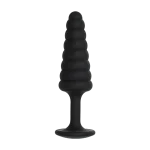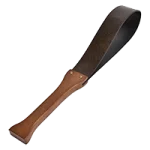6.2K
If you are interested in trying rope bondage, there are a lot of things you need to learn beforehand, such as anatomy, knots, safety, and more.
There is another very important…
Real rope – Because buying and collecting rope is more than just going to your local hardware store and buying the cheapest rope available.
Important Notes Before You Begin
- Check Prices – Items in sex shops are often overpriced. Try going to a hardware store or other place to find what you need.
- Watch your teeth – The teeth are the “drag” or friction of the rope, so it determines how well knots, twists, and loops hold together.
- Note the diameter – Preferably something that works with 5mm or thickerThinner cords should be avoided for safety reasons (too much pressure can cause discomfort, circulation problems, chafing, or worse). Also, some robe fibers (like cotton) can stretch and lose their diameter, which can cause problems.
- Note on weaving – Ropes are braided together. Different densities affect how tight the knots are and how easy it is to untie them. The same is true for twisted ropes.
- Branding is meaningless – Take the same rope from different manufacturers and they will be different, so keep that in mind when shopping.
- Understand your needs – There’s a big difference between tying someone up for simple bedroom fun and going into a full load-bearing suspension rig. Also, whether you want a visually pleasing result or a practical one will change the rope you need.
- Cut open—— If you buy a longer section, you’ll have to cut it to a manageable length – the length will depend on your preference.
- break the usual – Stiff ropes are like shoes, you have to break them in before they become easier to work with. Natural fibers also need to be boiled, waxed, or oiled (or just plain washed because it’s rough and smells).
- Keep up the maintenance – Some ropes have a longer lifespan, but not forever. Trim loose fibers, store in a bag and wash if necessary (read washing instructions at the end of the article).
- Mix well – Detangle the ends. This means tidiing the ends of your hair so they don’t fray or unravel.
- Watch out for allergies—— Natural fibers carry the risk of causing allergic reactions in some people, whereas synthetic fibers obviously do not have this problem.
- No right or wrong – All riggers (even rope lovers) have their preferences. As long as it’s safe, don’t let anyone convince you there’s only “one right choice.”
What types of ropes are there?
They are divided into two categories − Natural and synthetic. Each method has its own advantages and disadvantages. Let’s start with natural…
numb
|
|
jute

|
|
cotton

|
|
Flax/Linen

|
|
silk

|
|
bamboo

|
|
Abaca, sisal, coconut fiber
(abaca plant, agave fiber, coconut shell)

|
|
Next, let’s look at the compositing options…
Nylon, polyester, paracord

|
|
Synthetic Cannabis/HEMPEX

|
|
MFP Multifilament Polypropylene

|
|
Keep the rope clean
For natural fibers, washing can Downgrade The quality and durability of the rope.
However, it will be covered with various body fluids (sweat at least) or things like dust, dirt, or wax (if you like playing with wax), so you have to wash it.
- Here is an excellent guide on how to care for your rope Twisted Monk.
. . . . . . . . . . . . . . . . . . .
This is not a be-all, end-all guide to rope bondage. I highly recommend searching the internet for as many articles as you can. If you want to learn it, find a qualified teacher who can teach you how to enjoy this art form while staying safe.
The following websites contain more useful information:
Also, if you liked this article, you might like these:
Do you have anything to add? Please share in the comments


 Anal Beads
Anal Beads Anal Vibrators
Anal Vibrators Butt Plugs
Butt Plugs Prostate Massagers
Prostate Massagers
 Alien Dildos
Alien Dildos Realistic Dildos
Realistic Dildos
 Kegel Exercisers & Balls
Kegel Exercisers & Balls Classic Vibrating Eggs
Classic Vibrating Eggs Remote Vibrating Eggs
Remote Vibrating Eggs Vibrating Bullets
Vibrating Bullets
 Bullet Vibrators
Bullet Vibrators Classic Vibrators
Classic Vibrators Clitoral Vibrators
Clitoral Vibrators G-Spot Vibrators
G-Spot Vibrators Massage Wand Vibrators
Massage Wand Vibrators Rabbit Vibrators
Rabbit Vibrators Remote Vibrators
Remote Vibrators
 Pocket Stroker & Pussy Masturbators
Pocket Stroker & Pussy Masturbators Vibrating Masturbators
Vibrating Masturbators
 Cock Rings
Cock Rings Penis Pumps
Penis Pumps
 Wearable Vibrators
Wearable Vibrators Blindfolds, Masks & Gags
Blindfolds, Masks & Gags Bondage Kits
Bondage Kits Bondage Wear & Fetish Clothing
Bondage Wear & Fetish Clothing Restraints & Handcuffs
Restraints & Handcuffs Sex Swings
Sex Swings Ticklers, Paddles & Whips
Ticklers, Paddles & Whips




















